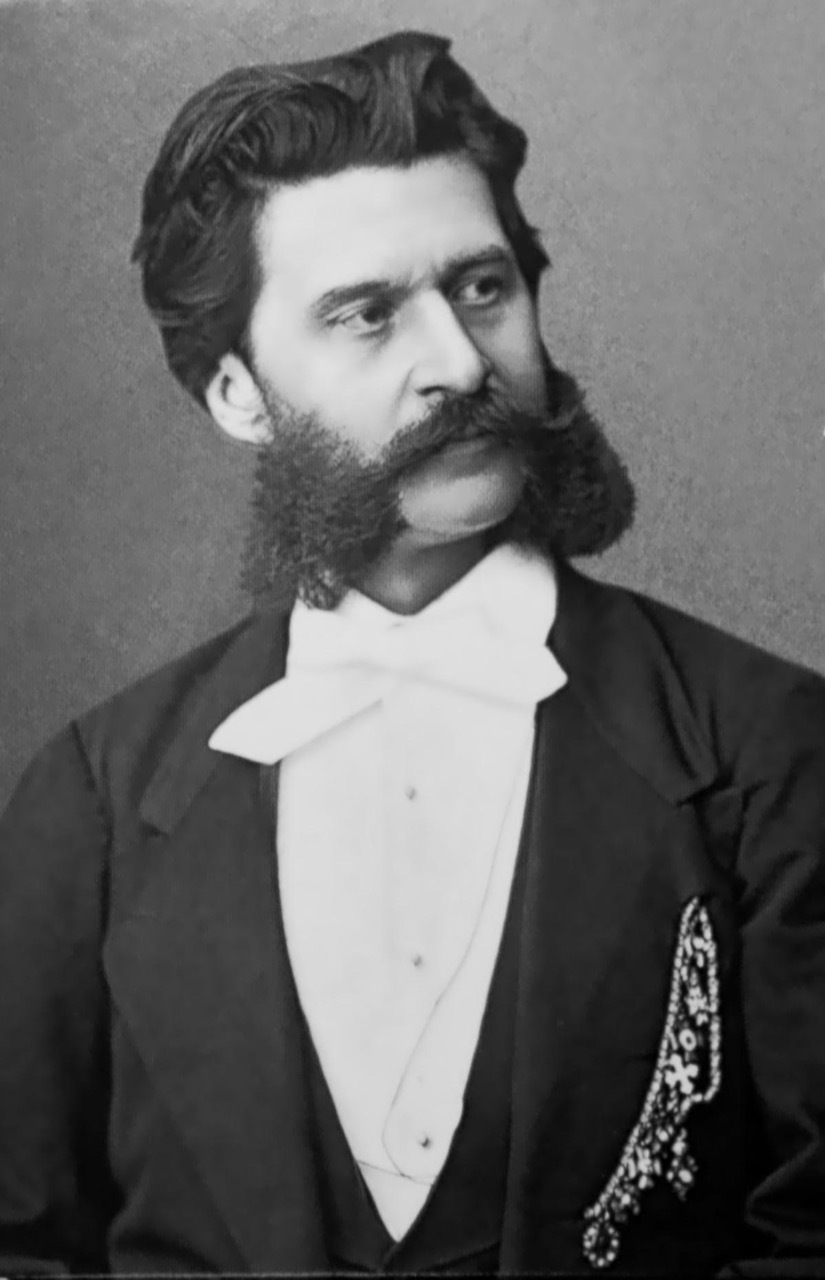Who is Johann Strauss Jr?


The Strauss family was of Hungarian and Jewish heritage, arriving in Vienna around 1750. Johann Baptist Strauss Sr. (1804-1849), also known as Johann Strauss I and Johann Strauss the Elder, studied violin and worked his way into the social circles of the city. He soon realized that the only way to increase his reputation was to travel, and in the mid-1830s, he became one of the first to take dance music on tour. He was immediately successful and his reputation grew quickly; in 1846 he was given the honorary title of Hofballmusik-Direktor for Austria. He died unexpectedly of scarlet fever in 1849. Johann Sr. was also an astute businessman and an excellent showman, equally adept at composing appealing waltzes, compiling delightful programs, and putting on a show that was attractive to various social circles. He passed these abilities on to three of his sons, Johann Jr., Josef, and Eduard, each of whom eventually led their own dance orchestras.
Though his father really wanted him to have a career in banking, Johann Jr. (also known as Johann II, Johann the Son, and Johann the Younger) decided in the early 1840s that he would follow in the family business. He studied violin and composition and absorbed all he could from his father. He received his first license to hold “musical entertainments” in 1844, and his official debut was on October 15 of that year in the Vienna suburb of Hietzing. The program included popular works by Giacomo Meyerbeer, Daniel Auber, Franz von Suppé, and his father, as well as premieres of four of his own compositions. The press was unanimous in its praise, predicting success similar to that of his father.
The shadow of Johann Sr. was considerable, but it did not take long for the son to assume the mantle. The dance-music social scene in Vienna in the 1850s, like other European cities, was intensely active, and Johann Jr. suffered a nervous breakdown in 1853 that led to rest periods in summers. His first important compositions began to appear during this time, and by the mid-1860s, he had established himself as Europe’s leading composer of dance music. Although he did not travel as much as his father, and even avoided it whenever possible, he made important appearances in Paris, London, Boston, New York, and Berlin.
Johann Jr. readily credited his father and Joseph Lanner (1801-1843) for their contributions to the waltz as a form and its place in Vienna’s social life. The waltz originated in the peasant dances of Upper Austria, Styria, and southern Germany. Composers would normally chain together seven or eight unrelated waltzes without introduction or coda. The elder Strauss and Lanner created waltzes that were more polished, with a more varied and refined orchestration, new introductions and codas, as well as clever and charming musical devices, such as bird calls, or even just naming waltzes in tribute to public figures. Johann Jr. then used this foundation to extend the forms, orchestrating more symphonically and expanding the waltz themes melodically and harmonically to produce a more organic musical composition. His improvements were respected by established composers like Brahms, Wagner, Richard Strauss (unrelated), among others. Surprisingly, he staunchly championed the music of Liszt and Wagner, occasionally introducing “progressive” elements of their music into his waltzes. These musical characteristics and Strauss’s showmanship resonated with high society, elevating the Viennese waltz to become a feature of the concert hall, not just the dance floor.
Johann Jr. can be seen as a sort of pop icon who traveled all over the world to conduct his own and many other works. Most of his enormous output is dance music, but he expanded into other genres as public taste called for it. He composed over 500 waltzes, polkas, quadrilles, and other types of dance music, as well as a ballet and several operettas, his most famous being Die Fledermaus. In the footsteps of his father, Johann Jr. also composed numerous works to commemorate significant social, cultural, technological, or political events in Vienna, in the Habsburg Empire, or elsewhere in Europe. The idea of performing an all-Strauss program took root in Vienna in the 1920s and later became connected with the Vienna Philharmonic’s New Year’s Concert, a tradition that had begun a century earlier. Cities all over the world are commemorating The Waltz King’s 200th birthday, including the city of Vienna’s year-long celebration “Johann Strauss 2025 Vienna.”
—Dr. Jeffrey Snedeker